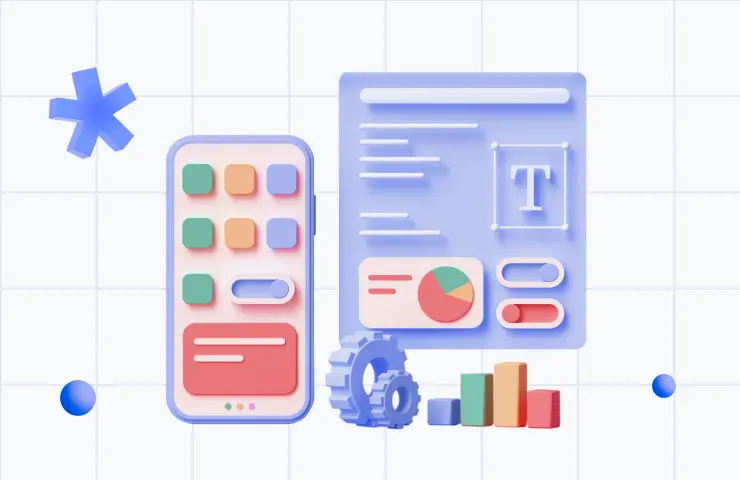What Are No-Code Tools?
Basics
No-code tools simplify the complex processes of Web3, making blockchain more accessible to everyone, empowering individuals to build decentralized applications without coding abilities. However, there are various limitations associated with no-code tools, such as data security and limited functionality.
What Are No-Code Tools?
No-code platforms allow people to create software, websites, or automate tasks without coding knowledge. These platforms typically use visual interfaces, where users can build by dragging and dropping elements.
In cryptocurrency, no-code tools make blockchain technology accessible to those without programming skills. These platforms offer simple interfaces and ready-made workflows, enabling users to perform tasks that once required extensive coding. This includes creating smart contracts, developing decentralized applications (DApps), and conducting decentralized finance (DeFi) transactions.
For example, with a no-code platform, a user can create a smart contract on Ethereum by inputting transaction details like the parties involved and the conditions, without writing any code. Similarly, users can easily create DApps, set up crypto trading bots, or engage in yield farming without any coding by selecting options and defining parameters.
Practical Applications for No-Code Tools in Web3
No-code platforms are broadening the reach of Web3 by allowing non-technical users to interact with decentralized technologies. Below are some notable use cases:
- Building Decentralized Applications (DApps): No-code platforms make it possible for anyone to create DApps on blockchain networks. Without writing any code, users can develop various applications, such as games, marketplaces, or social platforms.
- Designing Smart Contracts: Smart contracts, which automate transactions on blockchains like Ethereum and BNB Smart Chain (BSC), are simplified with no-code tools. Users can set terms and conditions for contracts without needing to program.
- Creating DeFi Projects: No-code platforms empower DeFi participation by enabling users to create yield farming strategies, liquidity mining operations, and even entire DeFi protocols without requiring coding expertise.
Advantages of No-Code Tools in Crypto
Discover the key benefits that no-code tools bring to the world of cryptocurrency:
1. Open to Everyone
No-code platforms remove the coding barrier, allowing anyone to create technology solutions. They democratize development by enabling non-coders to participate in building applications.
2. Faster Development
With a simple drag-and-drop interface, no-code tools speed up the design and development process. This approach eliminates long coding sessions, resulting in faster project completion and increased efficiency.
3. Reduced Costs
By minimizing the need for specialized programmers, businesses can lower development costs. The rapid development cycle with no-code platforms also leads to fewer resources required for updates and maintenance.
4. Adaptable and User-Friendly
No-code platforms enable quick modifications and updates, facilitating rapid response to business needs. This flexibility allows organizations to adapt and innovate more quickly compared to traditional programming methods.
Challenges of No-Code Tools
Here are some common limitations you might encounter with no-code platforms:
1. Restricted Customization
Though no-code tools offer considerable flexibility, they may not be suitable for highly specialized or complex projects. Traditional coding often remains necessary for advanced customization beyond what no-code platforms allow.
2. Security Risks
The simplified development environment of no-code tools can lead to security vulnerabilities. If security protocols aren't strictly maintained, there is a risk of data breaches or other privacy issues due to inherent platform weaknesses.
3. Vendor Dependency
Choosing a no-code platform creates reliance on the vendor. If the vendor changes its pricing structure, encounters technical issues, or ceases operations, it can significantly affect a business's application development and sustainability.
4. Scalability
Challenges No-code platforms are typically designed for small to medium-scale applications. When dealing with large-scale projects that require high computational power or complex data handling, these platforms might not be up to the task.
Conclusion
No-code platforms are transforming Web3 by allowing a wider range of participants to build on blockchain. They improve accessibility and let users quickly create blockchain-based applications, contributing to the growth of decentralized technology.
Yet, the benefits come with notable limitations. Issues like limited customization, security risks, and vendor dependency require careful consideration when comparing no-code to traditional coding methods. Ultimately, no-code tools bring blockchain development within reach for many. However, their use should be accompanied by a thorough assessment of potential downsides. To meet complex demands, a mixed approach that includes both no-code and traditional coding may be the most effective strategy.
